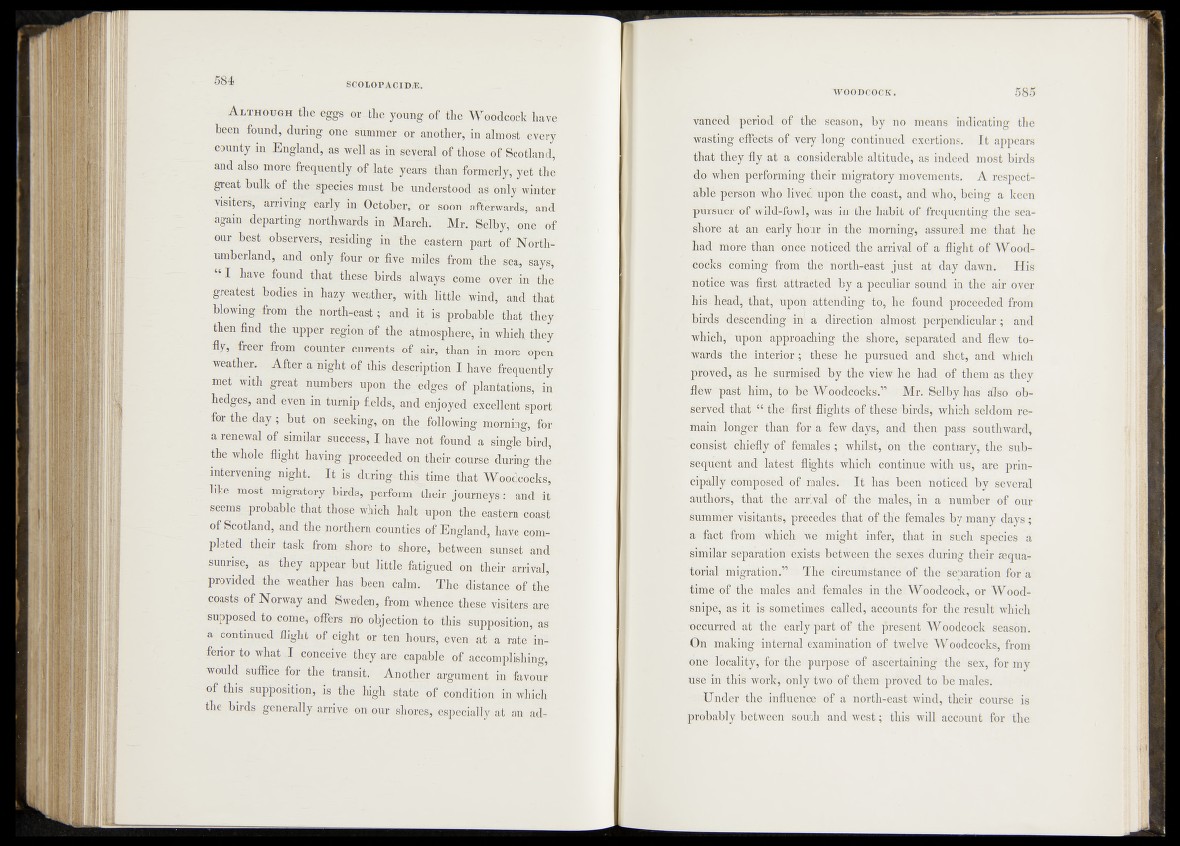
Although th eeg g so r-th e young of the Wet® ^ck .h av |
been found, during one -summer or another, in afafat- every
eounty in England, as well as in'several of those of Scotland,
“ id also more frequently of date years than formerly,-yet thé
great bulk of therspeSés^nusé .understood ^ 'only wimtet
^ sitt5rs> arriving early in October; or -soon afterwards, and
-again departing northwards in March”- Mr. &elby; '•pne--'of
our best -observers, Residing in the eastern-part of-Northumberland,
and;-only four or S im i l e s fromft'he. sea, -se^ s;
“ I have -foundthat thhse birds" always come övéfe^iVgi^
greatest - bodies in hazy weather, w i t h ^ i l j ^ n d , and that
blowing-from the n o rfk e ^ t r a n ^ f tj|S .prob4bl4/ ^ t f t ^ ' -
then, find -the upper region of therat:m©s,pberej ,in|whkkt^f%
fly, freer from ^counter currents of air, ^ h a k in Open
weathes.- After a nighttdl this d e s c r i j ||w have fr^q lp tly
met with great numbers upon thé jed g e^ ^ p lan ta tfo n s,'in
hedges, and even in turnip fields, and enjoyed -excelleht'fiport
for the day; but on seeking, on the following roOrhiS^Bfo-B
a renewal of similar- success, I have'not found a single bird,
the whole flight haring proceeded, on tbejr c « e duringjthe
intervening night.. It is t ó g T h i ^ t im e , that
like most migratory birds,' pérform theirv j ourfieyS^: and it
seems .probable that those'which halt'-upon The. eastern coast
of Scotland, and the northern, counties .of England, have eom-
pleted their task from. shore to shore,""between sunset and
sunrise, as they appear but little fatigued on their arrival,
provided the. weather has been calm* The distance of .the
coasts of Norway and Sweden,Trom whence these visiters are
supposed to come, offers no objection to this supposition, as
a continued flight of eight orden hours, even at a rate inferior
to what.I conceive they are capable of accomplishing,
would suffice for the transit. Another argument in favour
of this ..supposition, J s the high state of condition in which
the birds generally arrive on our shores, especially at an ad-
Vanced period of the season, by no means indicating the
wasting effect of'very'long continued exertions. | I t appears
that they fly at a (Considerable altitude, as indeed most birds
do when performing their migratory • movements. A respect-
ablè^iÉstm -^idfered' upon'the coast, and who, being a keen
pursuer of wild-Mwl^ 'was in thé habit of- frequenting the seashore
at an early he'Ur^Sni-thte morning, assured me. that he
had more than óïfCèjriioticed the arrival of a flight of Woodcocks
coming* from , thefnortheast just at'day dawn. His
nöM'ce-rwas- first attracted by^a peculiar sound in the air over
' his-Tidath, that, upon attending to, he found proceeded from
/te|Msr’descending' in- 'a direction almost perpendicular ; and
wMchf upon approaching the5-shore, separated and flew to?
wards the interior; these he pursued and shot, and which
proved, as he aurmised by the view he had of them as they
flew past him, tö" be Woodcocks.” Mr. Selby has dlso observed
tlött “ the* first flights-öfrthesë birds, which? seldom re?
main- longer than’‘for a few days; and then; pass southward,
cOnsi'str chiefly :df females whilst, bn the contrary, the sub?
stqtient and latêSt- flights which continue with uS, are principally
cttttip'OsM^ Öf males** I t has been noticed by several
authors,- that -the arrival of the 'males, in a number of our
summer ;visitants, precedes that of the females by .-many days;
a fact from which we might’ infer; that in such spepies a
similar separation exists' between, the sexes during their soqua?
torial migration.” ' The circumstance of the separation for a
time of the males and femalesoin: the; Woodcock, or Wood-
Snipe, as it is sometimes Called, accounts for the result which
■occurred at tie early part of the present Woodcock Season.
On making internal examination of twelve Woodcocks, from
one • locality, for the purpose of ascèrtaining the sex, for my
use in this work, only two of "them proved to be males.
Under th e . influence of a north-east wind, their course is
probably betweén South and west ; this will account for the